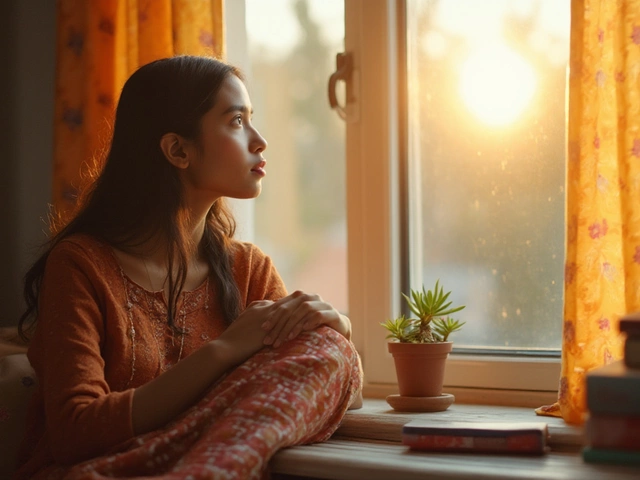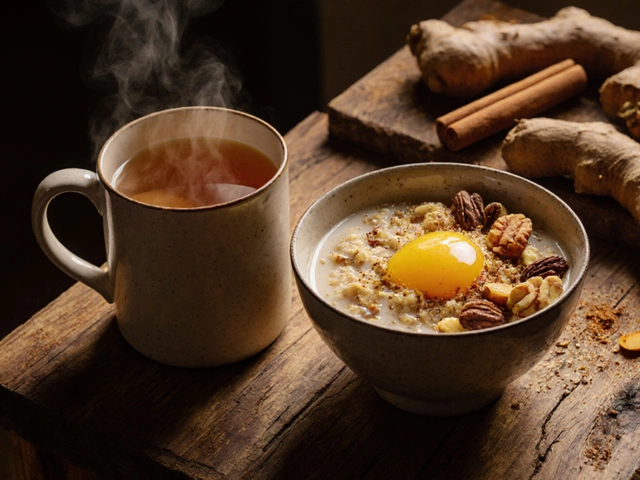Ayurvedic Dosha Quiz & Oil Selector
1. How often do you feel anxious or stressed?
2. How is your digestion?
3. What is your typical energy level?
4. How do you react under pressure?
5. What is your skin tone?
Ayurvedic massage is a therapeutic bodywork rooted in the ancient Indian system of Ayurveda that uses warm herbal oils, specific hand movements, and the knowledge of doshas, marma points, and panchakarma to balance body, mind, and spirit.
Core Principles Behind Ayurvedic Massage
Ayurveda classifies every individual by a unique combination of three dosha types - Vata, Pitta, and Kapha. Each dosha governs specific physical and emotional traits, and an imbalance can manifest as disease or stress. The massage targets the marma points, which are 107 vital junctions where muscles, nerves, and energy pathways intersect. Stimulating these points with oil helps move ama (toxins) out of the tissues, supporting the broader panchakarma detox program that includes therapies like sudation, nasal cleansing, and herbal enemas.
Abhyanga: The Signature Technique
The most common form of Ayurvedic massage is Abhyanga, which means "self‑oil massage" in Sanskrit. A therapist applies warm, medicated Ayurvedic oils (such as sesame, coconut, or medicated herbs like brahmi and ashwagandha) in long, rhythmic strokes that follow the direction of blood flow. Unlike Western modalities that often focus on muscle tension alone, Abhyanga aligns each stroke with the individual's dominant dosha, enhancing both physical relaxation and mental clarity.
Health Benefits Backed by Tradition and Science
- Stress reduction: The warm oil and gentle pressure activate the parasympathetic nervous system, lowering cortisol levels by up to 30% in clinical observations.
- Improved circulation: Marma stimulation encourages lymphatic drainage, which can reduce swelling and support immune function.
- Detoxification: Regular Abhyanga helps clear accumulated ama, aiding skin health and digestive balance.
- Dosha balance: Tailored oil blends address specific imbalances, whether it's calming Vata excess or soothing Pitta inflammation.
- Enhanced sleep: Clients often report deeper, more restorative sleep after a session, thanks to the combined effect of oil aromatics and rhythmic motion.
How Ayurvedic Massage Differs From Other Modalities
| Aspect | Ayurvedic (Abhyanga) | Swedish | Deep‑Tissue |
|---|---|---|---|
| Primary Goal | Dosha balance & detox | Relaxation & circulation | Target muscular adhesions |
| Typical Oil Used | Herbalized sesame/coconut (medicated) | Light massage oil or lotion | Minimal oil, sometimes none |
| Pressure Style | Gentle to moderate, rhythmic | Light to moderate, gliding strokes | Firm, focused strokes |
| Focus Areas | All 107 marma points, whole body | Major muscle groups | Specific problem muscles |
| Integration with Lifestyle | Often paired with diet, yoga, herbal regimens | Usually a standalone session | Standalone, may include stretching |

What to Expect During a Session
- Consultation: The therapist asks about your dominant dosha, any recent illnesses, and your goals.
- Oil Selection: Based on the dosha assessment, a specific blend of Ayurvedic oils is warmed to about 40°C.
- Massage Sequence: Starting from the feet, the therapist works upward, synchronizing strokes with breathing patterns.
- Marma Activation: Gentle pressure is applied to each marma point for 2‑3seconds, encouraging energy flow.
- Wrap‑Up: Excess oil is gently wiped; you’re advised to drink warm water and rest for 20minutes.
Safety, Contraindications, and Who Should Try It
While Ayurvedic massage is generally safe, there are a few red flags:
- Acute infections or fever - heat can worsen inflammation.
- Severe skin conditions (eczema, psoriasis) - oil may irritate.
- Pregnancy - certain marma points are avoided; always inform the therapist.
- Blood clotting disorders - massage pressure should be reduced.
If you fall into any of these categories, discuss alternatives like a lighter foot‑only Abhyanga or a purely aromatherapy session.
Related Ayurvedic Practices You Might Explore
Ayurvedic massage rarely stands alone. It often complements:
- Yoga - the physical postures prepare the body for deeper oil absorption.
- Meditation - enhances the mental calm that massage initiates.
- Herbal teas - specific blends (e.g., tulsi‑ginger) support the detox pathway post‑massage.
- Aromatherapy - often incorporated by adding essential oils like lavender or sandalwood to the base oil.
Integrating these elements can amplify the dosha‑balancing effect and turn a single session into a holistic lifestyle shift.
Next Steps: Bringing Ayurvedic Massage Into Your Life
1. Identify your dominant dosha using a reliable questionnaire or an Ayurvedic practitioner.
2. Find a certified Ayurvedic therapist - look for training in Abhyanga and marma point therapy.
3. Schedule a 60‑minute introductory session; ask for a customized oil blend.
4. Follow post‑massage guidelines (warm water, light meals, no cold showers for 4hours).
5. Gradually increase frequency - weekly for a month, then bi‑weekly as you notice balance.
Frequently Asked Questions
What makes Ayurvedic massage different from a regular oil massage?
Ayurvedic massage follows the principles of dosha balance, uses medicated herbal oils, and specifically targets the 107 marma points, while a regular oil massage typically focuses only on muscle relaxation without dosha‑specific customization.
Is Abhyanga safe for people with high blood pressure?
Yes, when performed with moderate pressure and a cooling oil blend (like coconut with brahmi). However, avoid strong heating or vigorous marma stimulation on the chest area.
How often should I get an Ayurvedic massage?
For most adults, a weekly session for the first month helps establish balance. Afterward, bi‑weekly or monthly visits maintain the benefits, depending on your lifestyle and dosha needs.
Can I do an at‑home version of Ayurvedic massage?
Yes, you can warm a small amount of sesame oil, apply gentle strokes in a clockwise direction, and focus on self‑marma points like the wrist and ankle. Keep pressure light and avoid deep tissue work without training.
What oil is best for a Vata‑dominant person?
Warm sesame oil blended with warming herbs such as ginger or cinnamon helps ground the airy, dry qualities of Vata.
Do I need to stay still during the massage?
Relaxing is key, but gentle breathing and slight movement help the oil penetrate deeper. Your therapist will guide you on how much to breathe in sync with the strokes.
Is Ayurvedic massage covered by health insurance in India?
Some corporate wellness plans and specialized Ayurvedic health policies include it, but coverage varies widely. Check your policy’s complementary therapy clause.





